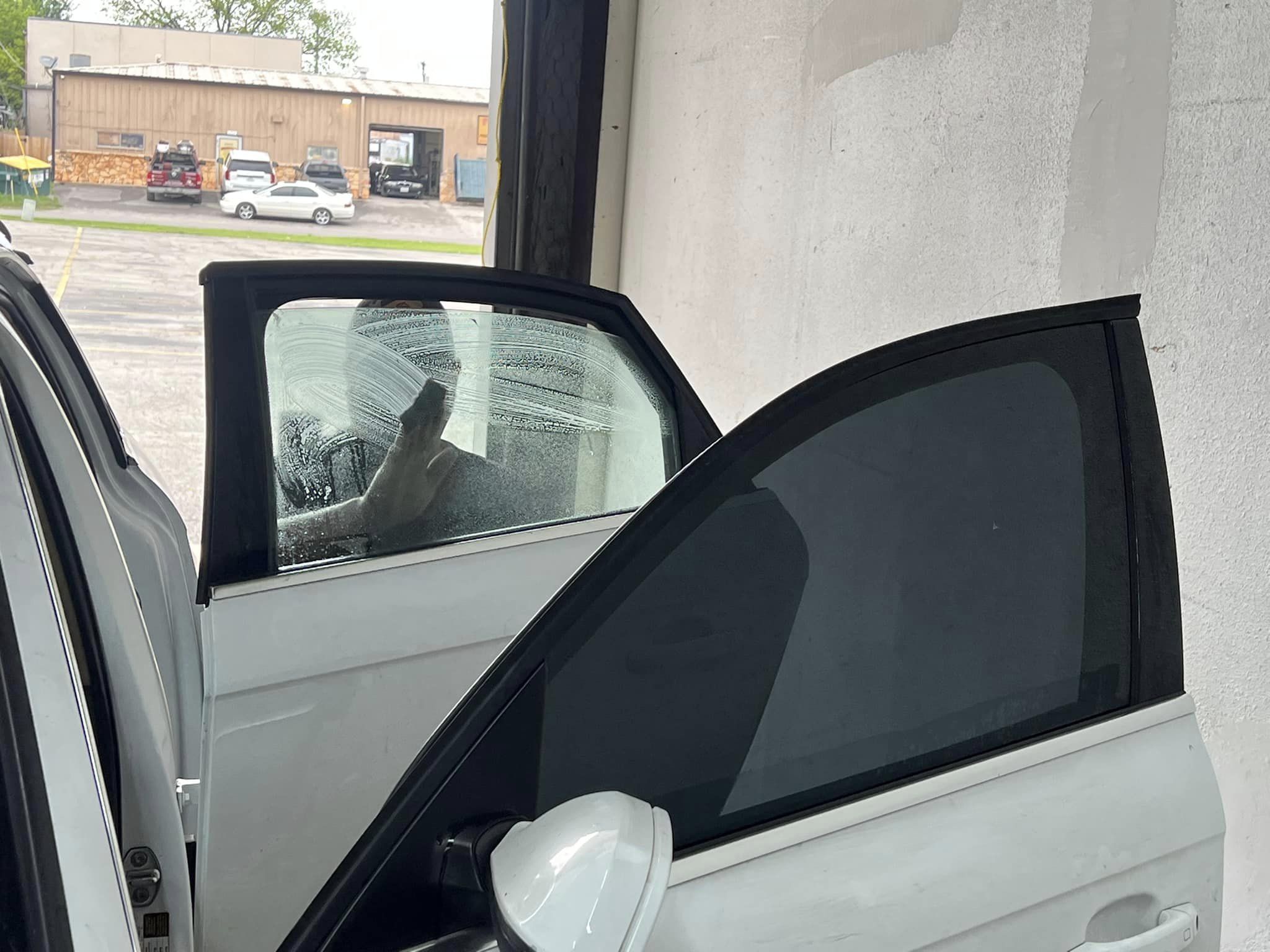When it comes to removing window tint, it’s akin to peeling away layers to reveal a clearer view. As you navigate through the process, you may encounter challenges that require finesse and precision.
Understanding the complications of this task is important, and the methods you employ can make all the difference. So, explore the expert techniques that will help you achieve a pristine result, ready to welcome the light in a whole new way.
Key Takeaways
- Use appropriate tools and preparation for safe tint removal.
- Follow a step-by-step process with caution and ventilation.
- Clean and polish windows for a residue-free finish.
- Regular maintenance preserves window quality and appearance.
Tools Needed for the Job
To safely remove window tint, you’ll need a few essential tools. Before diving into the task, it’s important to take safety precautions and make sure you have the right protective gear. The process of removing window tint involves the use of cutting techniques, so having the correct tools is paramount.
First and foremost, protective gear such as gloves and safety glasses are indispensable. These items will shield you from any potential harm during the removal process. Additionally, having a respirator is highly recommended to prevent inhaling any debris or fumes that may arise.
When it comes to application tools, a heat gun or hairdryer is essential. These tools help soften the adhesive beneath the tint, making it easier to peel off. A sharp utility knife or razor blade will aid in cutting through the tint and adhesive layers. It’s important to handle these cutting tools with care to avoid any injuries.
Moreover, having a spray bottle filled with a mixture of water and dish soap can assist in easing the removal process. This solution helps lubricate the surface, making it simpler to peel off the tint. By having these essential tools at your disposal and following the necessary safety precautions, you can effectively remove window tint with precision and ease.
Preparing the Work Area
Prepare your work area meticulously before starting the window tint removal process. Begin by making sure you have a clear workspace free of clutter to allow for easy movement around the vehicle. This step is important to prevent accidents and guarantee a smooth tint removal process. Lay down a protective cover on the floor to catch any debris or water that may fall during the removal process. This cover will also protect the flooring of your workspace from damage.
Next, gather all the necessary tools and materials in one easily accessible place. This will help you work efficiently without having to search for items mid-process. Organize your tools such as a heat gun, razor blade, and cleaning solution neatly on a table or workbench. Make sure you have protective measures in place, such as wearing gloves and safety goggles, to shield yourself from any potential harm.
Additionally, make sure the area is well-ventilated to prevent the accumulation of fumes from the heating process. Open windows or doors to allow fresh air to circulate throughout the workspace. By taking these precautionary steps and setting up a clear and organized work area with protective measures in place, you’re ready to proceed with confidence in removing the window tint safely.
Heating and Peeling the Tint
Before proceeding with heating and peeling the tint, make sure your work area is well-ventilated to minimize fumes and maintain a safe environment for the removal process. Using the right heating method is essential for effectively removing window tint in San Antonio, TX.
Here are some steps to follow:
- Heat Application: Start by using a heat gun or a hairdryer on the lowest setting to warm the corner of the tint film. Hold the heat source a few inches away from the window to avoid damage. The heat helps loosen the adhesive, making it easier to peel off the tint.
- Peeling Technique: Once the tint is heated adequately, gently lift the edge of the film using a razor blade or your fingernail. Slowly peel the tint off in a smooth, steady motion. If the tint resists, apply more heat as needed to soften the adhesive.
- Professional Assistance: If you encounter difficulties or are unsure about the process, consider seeking professional assistance. Window tint removal experts have the experience and tools necessary to remove the tint efficiently without damaging the glass.
Following these steps and using the appropriate heating method will help you safely and effectively peel off the window tint, giving your windows a fresh look.
Removing Adhesive Residue
For effective removal of adhesive residue after peeling off the window tint, utilize a specialized adhesive remover designed for automotive applications. When dealing with adhesive residue left on the glass surface, it’s important to employ the right techniques to guarantee a clean finish. Two primary categories of solvents can be used for this task: chemical and natural solvents.
Chemical solvents are typically more potent and effective at breaking down adhesive residues. These solvents often contain acetone, isopropyl alcohol, or citrus-based compounds that can dissolve the adhesive, making it easier to wipe away. However, it’s essential to follow safety precautions and manufacturer instructions when using chemical solvents to prevent damage to the glass or surrounding surfaces.
On the other hand, natural solvents like vinegar or soapy water can also be effective at removing adhesive residue. While they may take longer to work compared to chemical solvents, natural options are safer for the environment and don’t pose health risks if accidentally inhaled or touched.
To prevent adhesive residue from building up in the future, consider applying a residue-prevention solution after removing the window tint. This solution creates a barrier that makes it harder for adhesive residue to adhere to the glass, simplifying future cleaning and maintenance tasks. By following these adhesive removal techniques and practicing residue management, you can guarantee a smooth and spotless glass surface after removing window tint.
Cleaning the Glass Surface
Before applying the new tint, make sure the glass surface is impeccably clean. Opt for cleaning products specifically designed for automotive glass to prevent damage.
Employ proper wiping techniques to eliminate streaks and residue effectively.
Glass Preparation Steps
Consider starting the process by thoroughly cleaning the glass surface to guarantee proper adhesion of the tint film. To ascertain a successful glass preparation, follow these essential steps:
- Surface Protection: Before cleaning, cover any surrounding areas with protective materials to prevent damage from cleaning solutions.
- Safety Precautions: Wear appropriate personal protective equipment, such as gloves and safety goggles, to shield yourself from any potential hazards during the cleaning process.
- Use Proper Techniques: Employ lint-free cloths and a quality glass cleaner to eliminate all dirt, grime, and residue from the glass surface, ensuring a clean canvas for the new tint film application.
Choosing Cleaning Products
Start by selecting cleaning products specifically designed for glass surfaces to confirm the effective removal of any dirt or residue before applying the new tint film.
When choosing cleaning products, opt for those that are labeled safe for use on automotive glass to guarantee the effective removal of any dirt or residue. Look for options that are ammonia-free to avoid potential harm to the tint film you plan to apply. Eco-friendly alternatives are also available, promoting a sustainable approach to cleaning your windows. These products are gentle on the environment while still providing powerful cleaning capabilities.
Proper Wiping Techniques
To guarantee peak cleaning of the glass surface, employ straight, overlapping strokes with a lint-free microfiber cloth. When cleaning the glass surface after removing the window tint, follow these steps for the best results:
- Use a Drying Cloth: Once you have wiped the glass surface with the microfiber cloth, make sure it’s completely dry using a separate lint-free drying cloth. This step helps prevent streaks and watermarks.
- Apply the Squeegee Technique: For larger glass areas, consider using a squeegee to efficiently remove excess water and cleaning solution. Start from the top and work your way down smoothly and continuously.
- Check for Streaks: After cleaning, inspect the glass surface from different angles to spot any streaks or residue. Address any imperfections promptly for a flawless finish.
Polishing and Finishing Touches
For a professional finish, make sure the surface is free of any remaining adhesive residue before proceeding with the polishing and finishing touches. After the tint has been successfully removed, it’s important to inspect the window thoroughly. Use a buffing technique to eliminate any last bits of adhesive residue. A microfiber cloth can be a handy tool in this process, gently rubbing the surface until it’s completely clean.
Once the window is free of residue, consider applying a protective film to enhance the window’s durability and aesthetics. This film acts as a shield against swirl marks and UV rays, prolonging the life of your windows. Applying the protective film requires precision and patience. Make sure the window is completely clean before installing the film to avoid trapping any dust particles underneath.
After the protective film is in place, it’s time for the finishing touches. Use a clean, dry microfiber cloth to gently polish the window, ensuring a streak-free, glossy finish. Pay attention to the edges and corners, as these areas can often be overlooked but contribute significantly to the overall appearance.
Tips for a Smooth Removal Process
Consider utilizing a heat gun or steamer to facilitate the efficient removal of window tint without damaging the glass surface. These tools can help soften the adhesive, making it easier to peel off the tint. Here are some tips for a smooth removal process:
- Protective Gear: Before starting the removal process, guarantee you have the necessary protective gear, such as gloves and safety goggles. This will shield you from potential harm caused by sharp edges or chemicals during the removal process.
- Safety Precautions: Always work in a well-ventilated area to prevent inhaling fumes from the adhesive. Additionally, keep a spray bottle with a mixture of water and dish soap handy to help with peeling off the tint smoothly without leaving residue.
- Time-Saving Techniques: To save time and effort, consider using a razor blade or a plastic scraper to lift the edges of the tint. Once you have a corner lifted, gradually peel off the tint at a 45-degree angle. For stubborn spots, apply more heat using the heat gun or steamer.
Maintaining Tint-free Windows
To start, gather a mild glass cleaner that’s ammonia-free to avoid any potential harm to the window material. Apply the cleaner to the microfiber cloth rather than directly on the window to prevent any excess liquid from seeping into the edges of the glass. Gently wipe the entire surface of the window, ensuring that all dirt, dust, and smudges are removed effectively.
Regular cleaning not only enhances the appearance of your windows but also extends their lifespan by preventing the buildup of grime that could lead to swirl marks or other damage. By incorporating this simple maintenance task into your routine, you’re actively preserving the clarity and integrity of your tint-free windows for the long term.
In addition to cleaning, consider inspecting your windows periodically for any signs of wear or damage. Addressing issues promptly can help maintain the quality of your windows and prevent any potential problems from escalating. Remember, a little care can go a long way in keeping your tint-free windows in the best condition.
Summary
Now that you have successfully removed the window tint, your windows are as clear as a bell. Remember to follow the steps carefully and use the right tools to avoid any mishaps.
With a little patience and attention to detail, you can achieve a professional finish that will make your windows look brand new.
Keep up the good work, and enjoy the clear view ahead!





